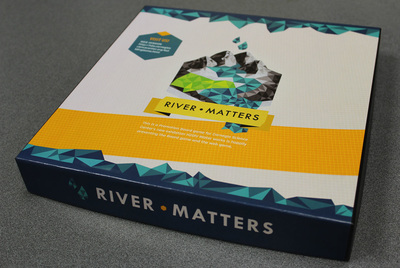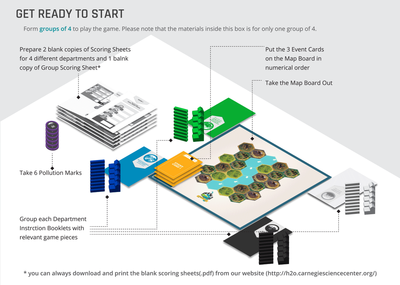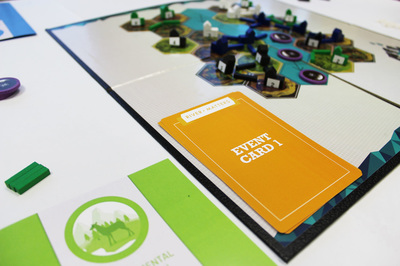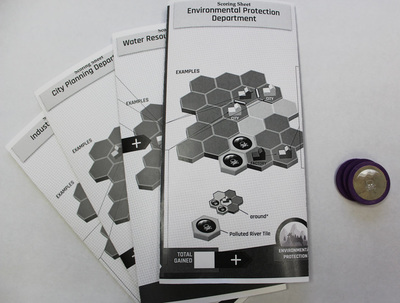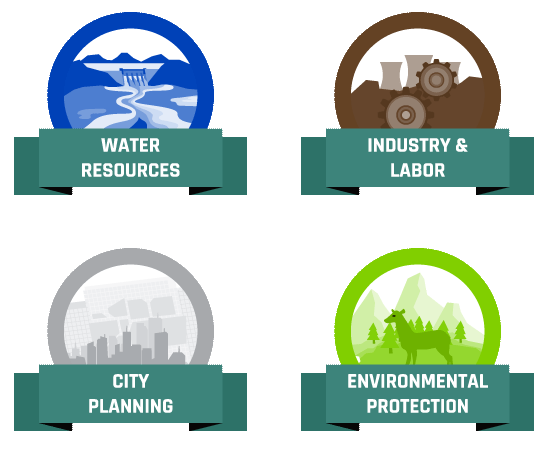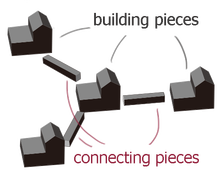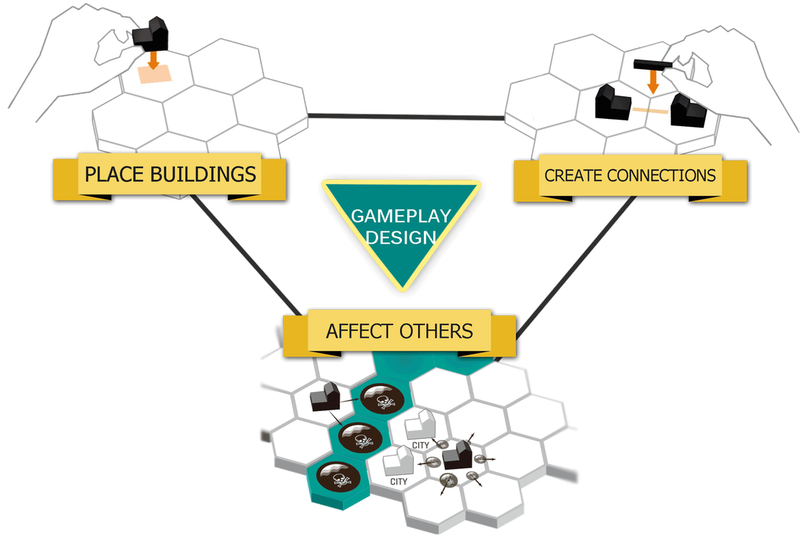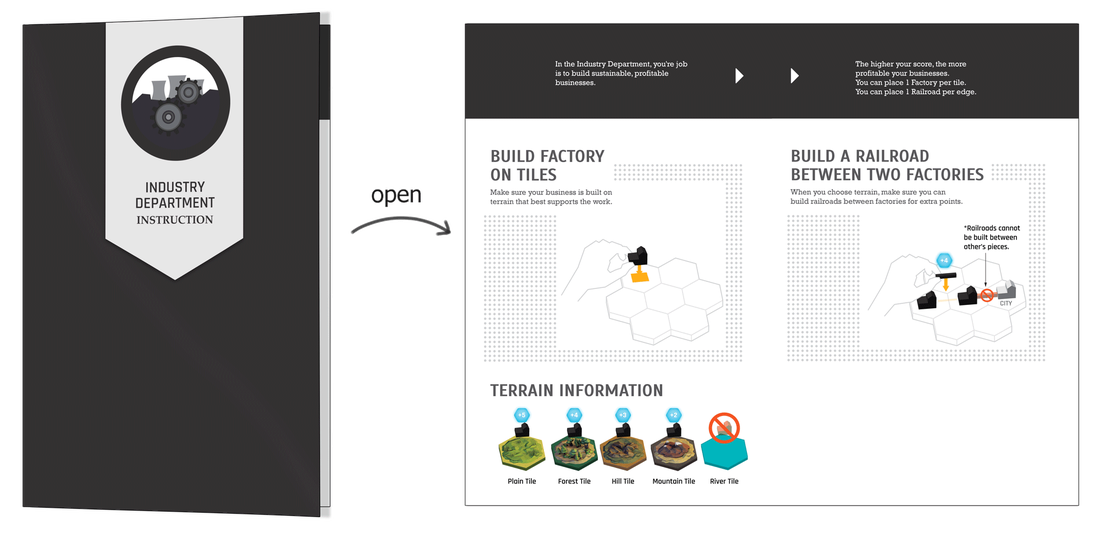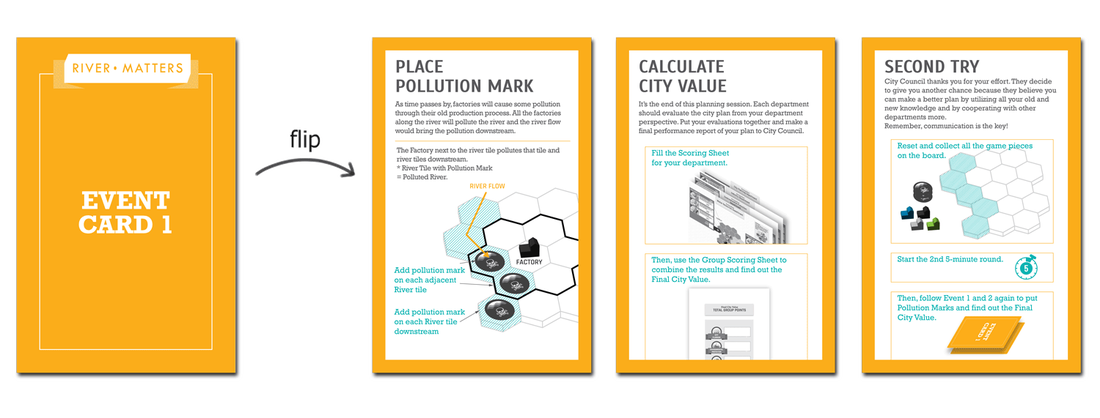WATERWORKS
Category2014 Fall ETC Client Project ClientCarnegie Science Center, Pittsburgh, PA Development Duration15 Weeks Development RoleGame Designer CreditsProducer - Seungsuk Cho Final Products1 physical board game and 1 web game |
DescriptionWaterworks is six talented individuals from Carnegie Mellon University’s Entertainment Technology Center. We have created a physical and digital game to market Carnegie Science Center’s exhibition “H2Oh!”. Our two games “River Matters” (physical / digital) will be played by visitors of the “H2Oh!” exhibition in classroom environments and individual households. “River Matters” are two hexagonal strategy games in which players will notice how the parts of a single system can affect the system as a whole through the city development process. They need to consider the roles and relationships between each stakeholder and try to balance the needs under limited resources. Personal Contribution
Visit our project website for more insights of our development. Also, feel free to try our River Matters online and check out the physical board game at The Game Crafter. |
Promo Video
Gameplay
In "River Matters", we'd like to transfer the message and trigger our audience to think about that
With the limited resources and complicated relationships between each stakeholders, how could human beings cooperate with each other and balance everyone's need?
In order to do so, I designed the "River Matters" as a city planning game. In the physical board game version, 4 players are assigned different role of the stakeholders in city development. Within 5 minutes, each of them needs to accomplish his/her goal individually by placing his/her own facilities on the map and build the connections between facilities. At the same time, they also have to pay attention to each other carefully to earn the highest score as a whole group.
Roles, Game Pieces, and Terrain Tiles
In the game, players are placing their own building and connecting pieces on the map. However, since the different types of terrain would affect building the facilities in different ways, each stakeholder may have his/her own favorite type of terrain to build his/her facilities. At the same time, each stakeholder would also want to utilize the connecting pieces between his/her own facilities to benefit his/her own facilities more. For instance, the connection between two factories could provide a more convenient communication. And hence, those two factories would be able to enhance the productivity and bring more profit.
As the group of buildings grows up, each different facilities would be adjacent to each other. Then, they would affect each other in a positive or negative way. For example, the factories built near by the cities would cause a negative effect. The air pollution from the factory would make the residential area not livable anymore. On the other hand, a land protection area next to the cities could provide residents a great recreation place to go.
Since there is a great amount of scoring rules and the time is limited, the communication would become a key. Players need to talk with each other to discuss their needs and share their knowledge frequently and efficiently, so that they can come up a solution which can avoid most of the negative impacts, gain as many of positive effects as possible, and balance everyone's need.
Design Challenges
There are plenty of design questions to answer during the game development progress. However, after a couple rounds of playtests, the most important and difficult one would be:
How to deliver the message through the game in just 30 minutes?
As an in-class activity, it's important to ensure the whole experience can be ended within a regular class time(around 45 minutes). Therefore, we are aiming to make the "River Matters" as a 30-minute game experience. Although, the complexity of the relationships between 4 stakeholders makes the learning curve of this game extremely steep. Players can be easily overwhelmed and got lost by the huge amount of gameplay and scoring rules. It's almost impossible to teach a new player how to play and then finish this game in only 30 minutes. Nonetheless, once the players got the necessary amount of information of their own roles and with a tiny prompt, they could and would share their own partial knowledge of the whole scoring rulesets and come up with a strategy together easily.
In order to soothe the learning curve, I re-organized and re-designed the learning paths for each player. I limited the amount of information each player would receive at one time. I designed the whole game as two phases: "knowing how to play the game properly" and "knowing how to play the game well".
Two Phases Design
|
First, it is "knowing how to play it properly". We are focusing on how to play the building and connecting pieces in the game. By assigning corresponding role sheet (here's the draft I made for our artists) to each player, s/he can focus on learning the basic gameplay rules (PLACE BUILDINGS and CREATE CONNECTIONS). |
|
|
*We also create tutorial video(storyboards) to help teacher in hosting the game. |
|
Then, it is about "knowing how to play it well". We are revealing the relationship rules(AFFECT OTHERS) by introducing the event cards(#1 & #2) and players filling out the corresponding scoring sheets for their own roles. After knowing how to play the game properly and well as a certain role, we will reveal the last event card(#3) and let players use combine their partial knowledge and come up with one optimal solution together. |
|
|
**We also create event cards videos(storyboards) to help teacher in hosting the game. |
***For more details about how the teachers would host the game and more information about the gameplay, please check the Game Flow Guidance.
Iterations of Scoring Sheets
